Every day, I go for a walk near my home. The walk is about 5 km, and I chose the route to stay away from main roads and be as pleasant as possible, while also taking me past Shirahata Hachiman Daijin. The number of public roadside shrines I pass may, therefore, be a bit surprising. This does not include shrines inside people’s gardens — just ones that are open to the general public.
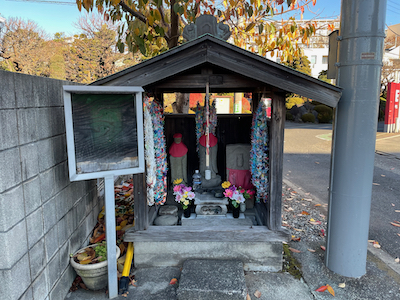
The first one is by the bus stop near our flat, with a petrol station (gas station, for Americans) on the other side. These look to me like Jizō images, which means that this one is “Buddhist”. The multi-coloured things hanging from the ceiling are bundles of origami cranes.
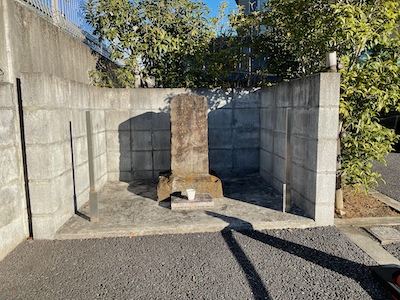
This stone is dedicated to the Dōsojin, kami of the roads, so this one is “Shinto”. Dōsojin are common, and sometimes take the form of carvings of a man and woman, but these simple stones are also a common form. This one used to be next to a field, and the New Year bonfire for the decorations was held in front of it. However, the field was sold a few years ago, and an old folks’ home built on the site. The Dōsojin was preserved, however, and had this little enclosure built around it. When I was passing it on this day, one of the staff from the home was making an offering of water, and at certain times of the year they put bamboo in the two metal holders at the front, and hang a shimënawa across the top. The shadows at the bottom are from cones and a pole at the right, which I think are there to stop people parking their cars across the front of the Dōsojin when they visit.
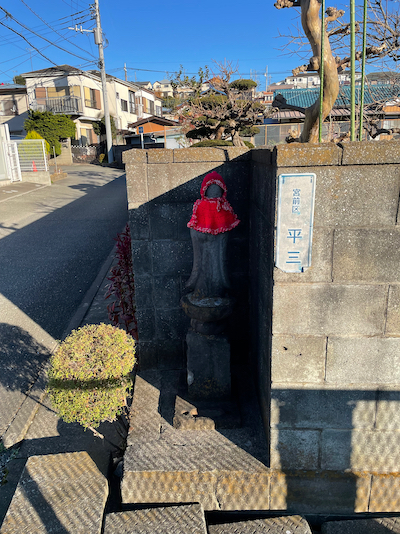
This is another Jizō, so “Buddhist” again. The red caps and bibs are common adornments for Jizō statues, at least around here. As you can see, it is at the corner of a house’s plot, and the wall has been built to leave the statue accessible from the street.
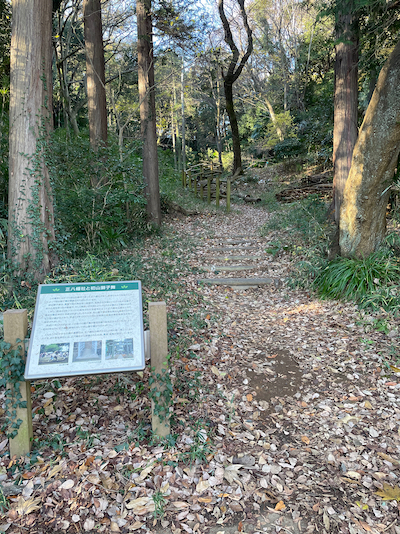
This one is a bit of a cheat, because there isn’t actually a roadside shrine here anymore. The information board tells us that this used to be the site of a Hachiman Jinja, Shōhachimansha, but it was merged into another local jinja, Sugao Jinja, in 1910, when the government was closing a lot of local jinja. The jinja had an associated sacred dance, a “shishimai”, performed with “lion” heads (although these have horns, so not realistic lions), and that was preserved, and is now performed at Sugao Jinja. Writing this, I realise that I have never been to see it, even though Sugao Jinja is close by. It’s not my Ujigami-sama…
I really should make time to go and see it next year, pandemic willing.
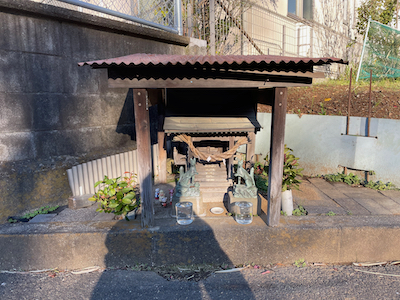
This little Inari shrine is by the Hirasë River, and this is “Shinto” again. There is no red torii, but the two fox statues in front of the little shrine make its dedication clear. This is an example of the shrines that make it so hard to count Inari jinja. If you include all of these, there might well be more Inari jinja than any other kami, because there are a lot of these around Tokyo. On the other hand, if you go to western Honshū, near Hiroshima, you are, I believe, more likely to find Kōjin shrines. These sorts of regional variations make it very difficult to find out what Shinto practices are like, much less explain them.
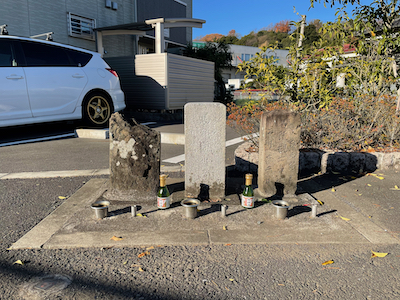
Two of these three stones say “Batōkannon”, which means “Horse-Headed Kannon”, so these are “Buddhist”. I know that stones dedicated to this particular Kannon are quite common in this area, but I don’t know anything about the background. These stones were preserved and reset, with the metal offering vessels set into the ground in front of them, when the apartment behind them was rebuilt a couple of years ago. The two bottles of sake had been there no more than a few days, because we had heavy rain a few days before I took this.
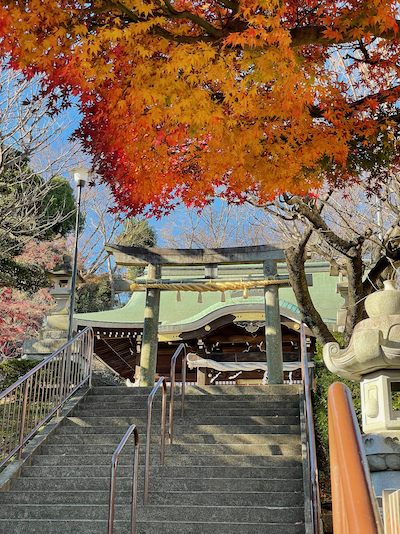
And this is Shirahata Hachiman Daijin, the only one that the route was deliberately designed to include. This one is Shinto, without scare quotes.
The scare quotes around the others are there because all of these roadside shrines are part of folk practices. As you can see from the pictures, they are all actively venerated, and offerings are left. However, it is very questionable whether the people doing so think of those practices as either Shinto or Buddhist, and the people who set them up may not have been very clear on the distinction either. Revd Kanzaki, whom I mentioned recently, wrote about “Nipponism” in his book: a faith that revolved around kami, Buddhas, and ancestors, and still was, in 1990, the common religious practice in his area. I suspect that the distinction is no clearer today. The shrines are tidied, offerings are made, and people take deliberate steps to preserve them and keep them accessible even when the land is sold and new buildings are constructed.
I do not know whether this particular route has a very high level of these shrines. It does go through the old centre of Taira village, so it may, but I also know of several other similar shrines in the area, one of which features in the YouTube video about Shinto in Everyday Japanese Life. There are certainly a lot of these things around, so maybe it is not that exceptional.
Thank you for another wonderful essay. These little shrines and stones around your neighborhood (and mine) are fascinating to me, and I wish I could learn more about them. The locals don’t often have much to say because it was always just ‘there’ for them, but I find it so endearing how they seem so overlooked, but at times I can find a new offering or see the leaves have been cleared. Your mention of Nipponism reminded me of how interesting it is to explain religion in Japan to someone not familiar with the culture. The way they include different aspects of different religions and cultural traditions in their daily practices is part of what drew me to the exploration and eventual practice of Shinto.
Thank you. Yes, it’s very different from the way religion works in western societies. That’s part of what fascinates me, as well.
i’m working on a project about shinto carpentry, do you have any other pictures of the little inari shrine? i’d love to see more of it if possible— thanks in advance!
I don’t have any more images right now, but I haven’t moved house so I can get more. Send me a message through the contact form if you want to talk about what the sorts of images you would like.